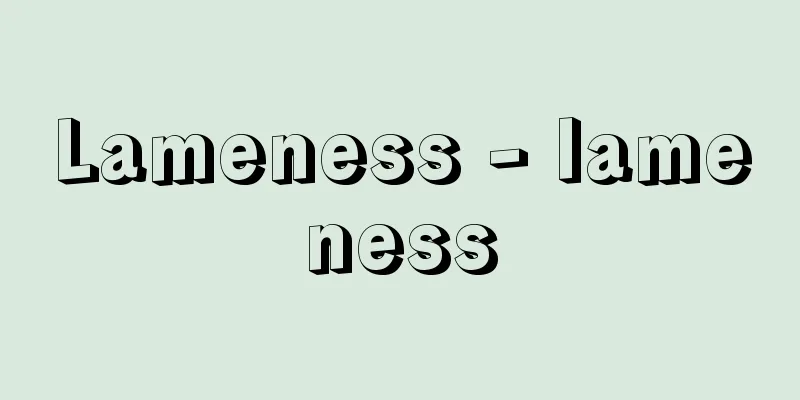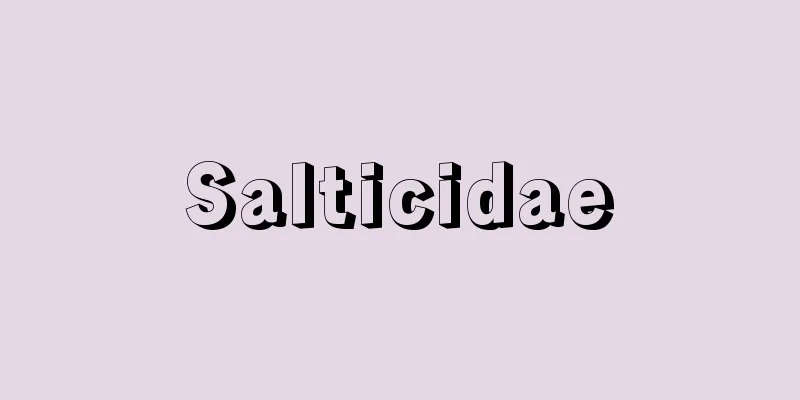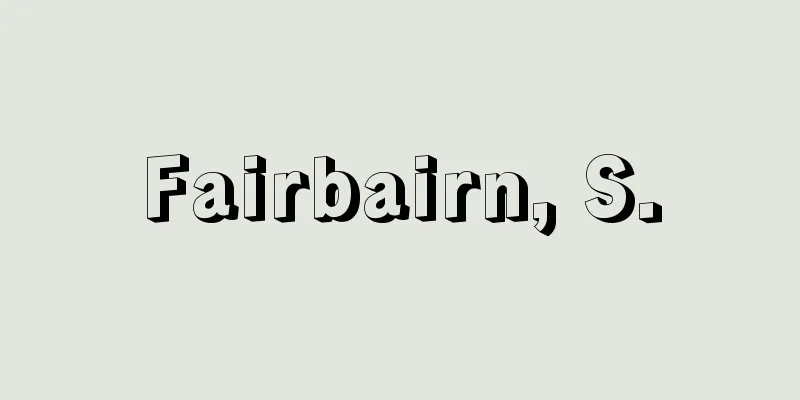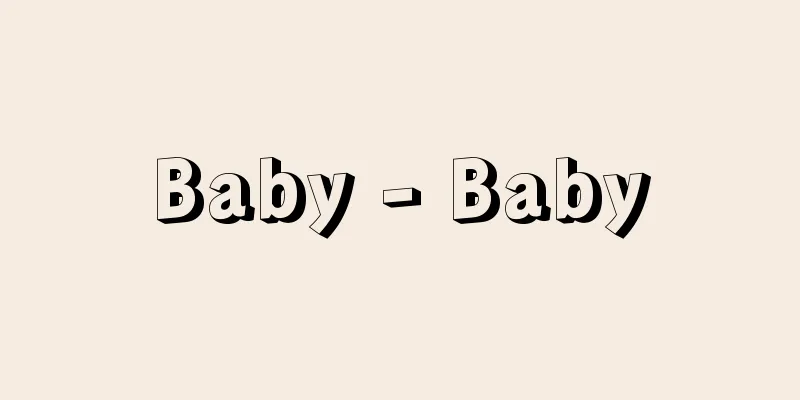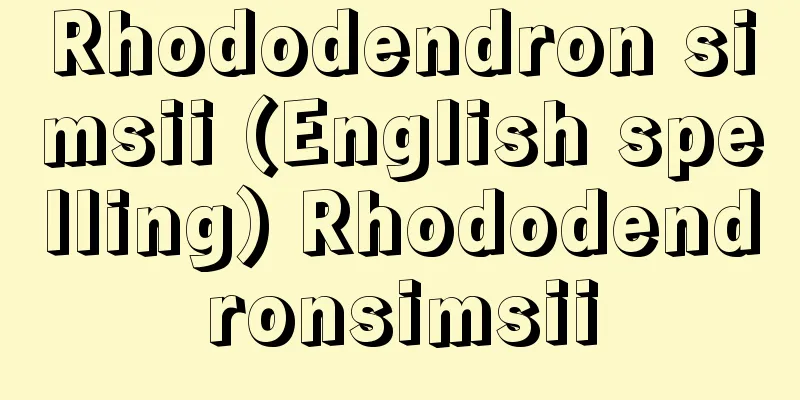Synthesizer - Shinsesaizaa (English spelling) (music) synthesizer
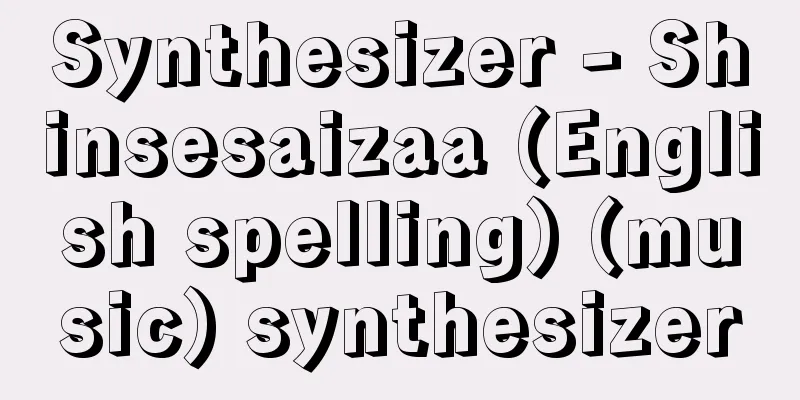
|
While normal musical instruments have specific sound characteristics, synthesizers are musical instruments designed to freely synthesize any sound using electronic technology, as their name (meaning "something that synthesizes") suggests. Whereas electronic musical instruments such as electronic organs have preset tones and other elements, synthesizers are different in that all elements can be freely adjusted. Synthesizers are often used not only on their own, but also in conjunction with conventional musical instruments. [Maekawa Haruhisa] historyThe origin of the synthesizer can be traced back to the "Telharmonium (dynamophone)" introduced by the American Thaddeus Cahill (1867-1934) in 1906. This had a mechanism for adjusting harmonics with resistors. The first modern synthesizers were produced by Harry F. Olsen (1901-1982) and others and introduced by RCA in the 1950s. Although they were already called "synthesizers," they had a strong experimental aspect, using punched paper tape for input. In the 1960s, Donald Buchla (1937- ) and Robert A. Moog (1934-2005) developed practical instruments for use in actual music. In particular, it gained widespread attention with the work "Switched-On Bach" (1968) by composer Walter Carlos (1939-, later Wendy Carlos), which was produced using the "Moog IIIC Synthesizer" that Moog commercialized in 1965. In Japan, it was popularized by Tomita Isao and Kitaro. [Maekawa Haruhisa] principleThe first synthesizers (analog synthesizers) that were put to practical use basically "synthesized" sounds using three components: (1) a part that generates the signal to be processed, (2) a part that adjusts the harmonics of that signal, and (3) a part that gives the sound a time-dependent volume change (envelope). Although in principle any sound could be created, practical constraints meant that they tended to be limited to "synthesizer sounds," but this "synthesizer-like" quality became one of their charms. They also had disadvantages, such as complicated operation and the need for multi-track recording in some cases, but these were eventually improved with technological advances. In the 1980s, digital technology was introduced into sound creation, and sampling the sounds of other instruments and other sources, which were often processed and used, became a major technology. As a result, it became possible to create more diverse sounds with a high degree of freedom, whether imitating the sounds of existing instruments or creating new sounds that had never been heard before, and sounds that did not necessarily feel like they were made using electronic technology. [Maekawa Haruhisa] Performance MethodSynthesizers generally have a keyboard, but because they are controlled by electrical signals, they can be played in ways other than with a keyboard, can play multiple synthesizers simultaneously, and are also suitable for automatic performance. Sequencers, which allow you to preset the sounds to be played and have electronic instruments play sounds according to those presets, have been used with (or built into) synthesizers since the early days, and as their memory capacity increased, it became possible to automatically play complex music (these are called "programmed" because the performance information is input in advance). At first, control methods varied depending on the manufacturer, but in 1982 a unified standard called MIDI (short for Musical Instrument Digital Interface) was established, allowing electronic instruments to be freely combined with each other or with peripheral devices. [Maekawa Haruhisa] Computer UseFurthermore, as personal computers have become more widespread, desktop music (DTM), in which music is created and played by controlling synthesizer sound sources with a personal computer (there are also software synthesizers in which the computer also handles the sound source functions), has expanded the range of ways to interact with music. In 1992, the General MIDI (GM) standard was established, which added standards for tone to MIDI. Under this standard, the same data can basically produce the same results even if the playback device is different, so it has become possible to distribute music in the form of MIDI data over the Internet, and it has also been used in online karaoke, bringing about new ways of making music. [Maekawa Haruhisa] "The Synthesizer: The History and Theory of the Revolution" by H.A. Deutsch, translated by Ikutaro Kakehashi (1980, Pipers)" ▽ "Synthesizer Theory" edited by Jun Arai (1988, Shinjinsha) ▽ "Synthesizer: Here are the Key Points 2" by Shunichi Furuyama (1990, Ongaku No Tomosha) ▽ "All You Need to Know About Synthesizers" by Naomune Anzai (1996, Rittor Music) ▽ "Electronic Music in Japan 1955-1981" by Yuji Tanaka (1998, ASCII) ▽ "My Life's Work is Music: The Dream of Developing Electronic Musical Instruments" by Ikutaro Kakehashi (2001, Ongaku No Tomosha) ▽ "Your First Synthesizer" by Shunichi Furuyama (Kodansha Gendai Shinsho)" [Reference] | | |Source: Shogakukan Encyclopedia Nipponica About Encyclopedia Nipponica Information | Legend |
|
通常の楽器が特定の音の性格をもつのに対し、その名(「合成するもの」の意)のとおり、電子技術を利用してあらゆる音を自由に合成することを意図して考案された楽器。電子オルガンなどの電子楽器は音色その他の要素があらかじめセットされているのに対し、シンセサイザーはすべての要素を自由に調節できる点が異なる。シンセサイザー単独での使用だけでなく、従来の楽器とともに使われることも多い。 [前川陽郁] 歴史シンセサイザーの源流は、1906年にアメリカのサディウス・ケーヒルThaddeus Cahill(1867―1934)が発表した「テルハーモニウム(ダイナモフォン)」にまでさかのぼることができる。これは抵抗器で倍音を調節できる仕組みになっていた。現在のようなシンセサイザーは、1950年代にアメリカRCA社から発表された、ハリー・オルソンHarry F. Olsen(1901―1982)らが製作したものが最初で、すでに「シンセサイザー」の名がつけられていたが、パンチ孔(あな)をあけた紙テープを入力に使用するなど、実験的な面が強かった。1960年代には、ドナルド・ブックラDonald Buchla(1937― )やロバート・モーグRobert A. Moog(1934―2005)らによって、実際の音楽に使用する楽器として実用的なものが開発された。とりわけ、モーグが1965年に商品化した「モーグⅢCシンセサイザー」を使って、作曲家ウォルター・カーロスWalter Carlos(1939― 、後のウェンディー・カーロスWendy Carlos)が制作した『スイッチト・オン・バッハ』(1968発表)によって広く注目されるようになった。日本では、冨田勲(とみたいさお)や喜多郎(きたろう)らによって一般化した。 [前川陽郁] 原理実用化された当初のシンセサイザー(アナログ・シンセサイザー)は、基本的には、(1)加工する元になる信号を発生させる部分、(2)その信号の倍音を加減する部分、(3)音に時間的な音量変化(エンベロープ)を与える部分、の三つによって音を「合成」する。原理的にはどのような音でもつくれるとはいえ、現実的な制約から「シンセサイザーの音」にとどまりがちであったが、そのいわば「シンセサイザー臭さ」が一つの魅力にもなった。操作が複雑で、場合によっては多重録音を必要とするといった短所もあったが、技術の進歩によってやがて改善されることになる。1980年代にはデジタル技術が音づくりに取り入れられ、また、ほかの楽器などの音をデータ化(サンプリングsampling)し、それを多くの場合加工して用いることも主要な技術になる。それによって、既存の楽器の音を模倣するにしても、あるいはそれまでにはない新しい音をつくり出すにしても、より多彩で、電子技術によっていることをかならずしも感じさせない音を、高い自由度でつくることができるようになった。 [前川陽郁] 演奏法シンセサイザーは、鍵盤(けんばん)を備えた形態が一般的だが、電気信号によって制御していることから、鍵盤によるのとは別の演奏法を行ったり、複数のシンセサイザーを同時に演奏することが可能であるばかりでなく、自動演奏にも適している。演奏する音をあらかじめ設定しておいて、それにしたがって電子楽器から音を出すシーケンサーsequencerは、初期のころからシンセサイザーとともに(あるいは内蔵されて)用いられ、その記憶容量が増えるにしたがって、複雑な音楽を自動演奏することが可能になった(演奏の情報を前もって入力しておくところから「打込み」とよばれる)。制御方法は、初めはメーカーによってまちまちであったが、1982年に統一規格であるMIDI(ミディ)(Musical Instrument Digital Interfaceの略)が制定され、電子楽器どうし、あるいは周辺機器との自由な組合せができるようになった。 [前川陽郁] コンピュータの利用さらに、パーソナルコンピュータが普及するにつれて、パソコンでシンセサイザーの音源(音源の機能までコンピュータが受け持つソフトウェア・シンセサイザーもある)を制御して音楽を制作、演奏するデスクトップ・ミュージック(DTM)も、音楽へのかかわり方の幅を広げている。1992年にはMIDIに音色に関する規格を加えたGM(General MIDI)規格が取り決められた。そのもとでは、再生する機器が異なっても、同じデータからは基本的に同じ結果が得られるため、音楽をMIDIデータのかたちでインターネットなどによって配信することが可能になり、また通信カラオケで使われるなど、音楽の新しいあり方をもたらしている。 [前川陽郁] 『H・A・ドイチュ著、梯郁太郎訳『シンセサイザー――その革命の歴史と理論』(1980・パイパーズ)』▽『新井純編著『シンセサイザー・セオリー』(1988・新人社)』▽『古山俊一著『シンセサイザーここがポイント 2』(1990・音楽之友社)』▽『安斎直宗著『シンセサイザーの全知識』(1996・リットーミュージック)』▽『田中雄二著『電子音楽イン・ジャパン 1955~1981』(1998・アスキー)』▽『梯郁太郎著『ライフワークは音楽――電子楽器の開発にかけた夢』(2001・音楽之友社)』▽『古山俊一著『はじめてのシンセサイザー』(講談社現代新書)』 [参照項目] | | |出典 小学館 日本大百科全書(ニッポニカ)日本大百科全書(ニッポニカ)について 情報 | 凡例 |
<<: Neolithic Age - New Stone Age (English spelling)
Recommend
Stavanger - Sutavanger (English spelling)
A city in southern Norway. It is located on the s...
Ternate Island (English spelling) Pulau Ternate
A small island in the northern part of the Maluku ...
Jokanji Temple
This Shingon Buddhist temple was located in Fushim...
Favosites (English spelling)
A representative genus of the Favosites family of ...
thematic atlas
…In addition, atlases that mainly focus on genera...
Osa - Osa
...Productivist constructivism in Russia was crit...
Guard - Guard
One of the feudal states of the Zhou Dynasty in C...
Macao - Macao (English spelling)
A former Portuguese colony on the west bank of th...
Ranula (English spelling)
[What kind of disease is it?] The area inside the ...
Larsa
An ancient Babylonian city located 32 km southeast...
Urayama Dam - Urayama Dam
…Urayama Power Station, which takes water from th...
technical college
A junior college is a college that is a set of sc...
Thaw - Yukidoke (English spelling) Оттепель/Ottepel'
A novella written by Russian and Soviet writer Eh...
Kawachi Kan - Kawachi no Aya
...They are said to be descendants of Emperor Lin...
Trockenmontagebau
...Many of the steel-framed buildings that follow...
